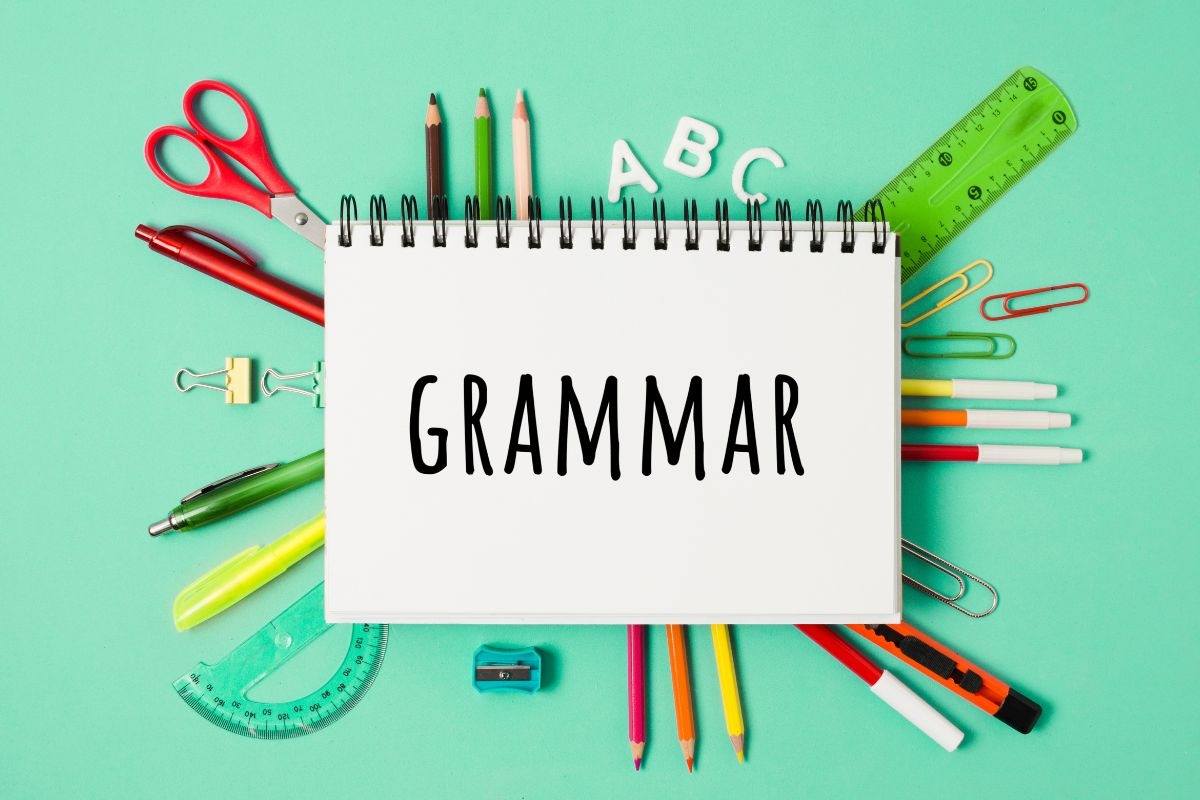Learning grammar rules is important to avoid embarrassment.
It is important that you can tell your story without someone jumping in to explain why you should have said “fewer problems” instead of “less problems.”
We all have them. Friends, family members, or that voice in our own head that loves to point out grammatical mistakes.
They mean well, but nothing breaks the momentum (and confidence) faster than an impromptu grammar lesson.
The solution isn’t to avoid these people (though sometimes tempting).
It’s to learn the rules they love to correct so you can speak and write with confidence.
In this blog, we’ll cover the fundamental grammar rules that will help you communicate effectively and with confidence.
Let’s dive in.
Key Takeaways
- Learn the grammar basics. Subject-verb agreement, proper tense usage, and clear pronoun references—and you’ll avoid most common mistakes.
- Keep your tense the same. Switching between past, present, and future can confuse readers—stay consistent with your tense.
- Pronouns should match the noun. Make sure words like “he,” “she,” or “they” clearly match the person or thing you’re talking about.
- Put adjectives in the right order. When using many describing words, there’s a natural order that sounds right in English.
- Use prepositions correctly. Words like “in,” “on,” and “at” aren’t all the same—each one has a specific use for time or place.
- Tools support, but don’t replace, understanding. Grammar checkers catch mistakes, but knowing why something is wrong helps you become a better writer.
What Are Grammar Rules?

Grammar rules tell us how to use language.
They show us how to structure sentences, use tenses correctly, and place punctuation in the right spots.
Think about it… Without any rules, would we be able to tell if someone is asking a question, making a statement, giving a command, or expressing emotion?
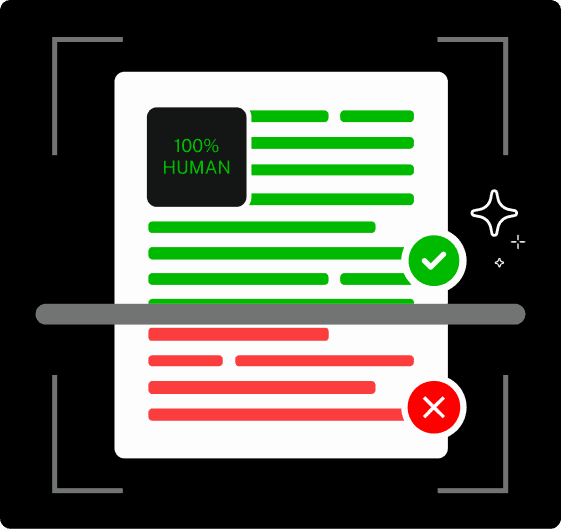
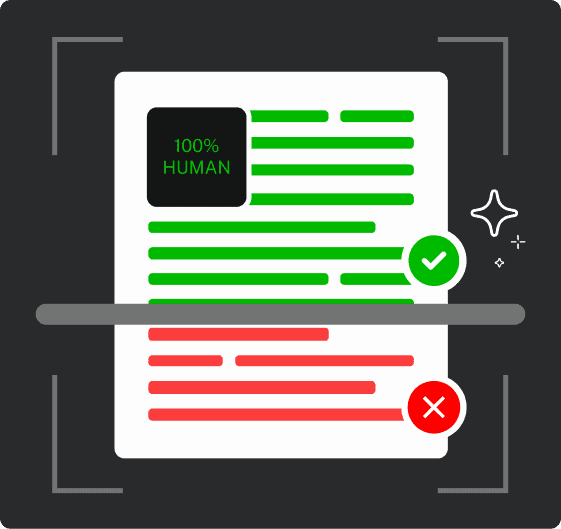
Never Worry About AI Detecting Your Texts Again. Undetectable AI Can Help You:
- Make your AI assisted writing appear human-like.
- Bypass all major AI detection tools with just one click.
- Use AI safely and confidently in school and work.
Grammar rules are the instructions that help people understand each other. For example, compare:
- Let’s eat, Grandma.
- Let’s eat Grandma.
A tiny comma has changed the entire meaning of the sentence.
These grammar rules are created so everything has a mutual understanding.
But grammar isn’t set in stone. It evolves. Words take on new meanings. Example:
- “Contact” used to be only a noun, now we use it as a verb: “I’ll contact her later.”
- The singular “they” is another modern shift used to include all genders: “Jordan said they’d join us.”
There are two main approaches to grammar:
- Prescriptive rules tell us how language should be used.
- Descriptive rules observe how people use language.
Today, linguists focus more on the descriptive side, because language is alive. It grows, shifts, and adapts with the people who speak it.
Grammar vs. Syntax vs. Style
These three often get confused together. Let’s break them down in simple terms.
1 – Grammar
Grammar tells us how words should be formed and used. Like when to say “walk” vs. “walked,” or “child” vs. “children.” It covers things like verb tenses, plurals, and subject-verb agreement.
Example:
- Incorrect: I has three books. (No subject-verb agreement)
- Correct: I have three books.
2 – Syntax
Syntax is about order. It’s how we arrange words in a sentence so they make sense. English usually follows this syntax: subject-verb-object.
Example:
- Incorrect: Books three I have.
- Correct: I have three books.
3 – Style
Style is where the personality comes in. It’s the tone, voice, and vibe of what you’re saying. You can say the same thing in different ways depending on who you’re talking to or the mood you want to set.
Example:
- Formal Tone: I have three books.
- Casual & Relaxed Tone: I’ve got three books.
Both are correct, they just feel different.
So now comes the question: Which grammar rule should you care about the most?
Let’s put it this way:
- Grammar mistakes can make your message hard to understand.
- Syntax issues slow the reader down or confuse them.
- Style slip-ups don’t break anything—but they can make your writing feel messy or off-brand.
So start with grammar and syntax to make sure your message is clear—then fine-tune your style to make it sound like you.
Now let’s go ahead to understand 12 basic rules of grammar.
Parts of Speech Rules

Understand grammar rules with the basics. Let’s walk through the key rules for each part of speech.
If you find yourself struggling to keep track of all the different parts of speech and their various sub-categories, creating a custom study guide can help.
Also, you can use Undetectable AI’s Acronym Generator when learning grammar rules to help simplify complex terminology into easy-to-remember abbreviations, making it much easier to memorize the essential building blocks of the English language.

- Nouns and Pronoun Rules
Nouns are the names of people, places, ideas, or objects.
Noun Rules
Here are different rules for different forms of nouns:
1 – Countable vs. Uncountable Nouns
- Countable nouns can be pluralized and used with many, few, a number of.
Example: many books, few apples. - Uncountable nouns cannot be counted directly; use much, little, a bit of.
Example: much water, little information.
2 – Irregular Plural Forms
- Some nouns change entirely or remain the same in the plural form.
Examples: child → children, mouse → mice, deer → deer, datum → data.
3 – Possessive Nouns
- Singular possession: Add ‘s → student’s book.
- Plural ending in -s: Add only an apostrophe → students’ books.
- Irregular plural possession: Add ‘s → children’s toys.
4 – Collective Nouns
- Treated as singular in American English (e.g., The team is winning)and plural in British English (e.g., The team are winning), depending on whether the group is seen as a unit or individuals.
Pronoun Rules
Pronoun is the part of speech that takes the place of the noun. Here are the grammar rules:
1 – Antecedent Agreement
A pronoun must match its noun in number and gender.
Correct (modern): Each student must bring their book.
(Traditionally “his or her,” now “their” is widely accepted.)
2 – Case Usage
- Subjective: I, he, she, we, they
- Objective: me, him, her, us, them
- Who/Whom: Who = subject, Whom = object.
Example: Who called you? / To whom did you speak?
3 – Pronoun Reference Clarity
- Avoid vague pronouns like it, this, or that unless the noun they refer to is explicitly clear. Example:
- Unclear: It was difficult.
- Clear: The test was difficult.
4 – Reflexive Pronouns
- Use myself, yourself, himself, etc., only when the subject and object are the same. Example:
- Correct: I taught myself.
- Incorrect: John and myself went to the store.
- Verb Forms and Tense Rules
Tense Consistency
- Verbs anchor sentences in time. Simple tenses cover the basics: past, present, and future. Example:
- Past: I walked yesterday
- Present: I walk today
- Future: I will walk tomorrow.
- Perfect tenses add complexity but precision. Example:
- “I have walked” connects past action to present relevance.
- “I had walked” shows one past action completed before another past action.
- “I will have walked” describes future completion.
- Progressive tenses show ongoing action. Example:
- “I am walking” happens right now.
- “I was walking” continued in the past.
- “I will be walking” will continue in the future.
- Sequence of tenses maintains logical time relationships. When someone said something in the past, report it in past tense:
- “She said she was coming,” not “she said she is coming.”
Common Verb Errors
- Irregular verbs cause persistent problems. Example:
- You lie down but lay something else down.
- You sit yourself but set something else.
- You rise by yourself but raise something else.
- The subjunctive mood survives in specific constructions. Example:
- “If I were you” expresses a hypothetical situation.
- “If I was you” sounds wrong to careful listeners, though it’s becoming more common.
- Modal verbs carry subtle meanings. Example:
- “Can” shows ability.
- “May” shows permission.
- “Could” and “might” express less certainty than “can” and “may.”
- “Shall” is mostly formal or legal now.
- “Should” gives advice.
- Phrasal verbs split in different ways. Example:
- You can “look up the word” or “look the word up” because “look up” is separable. But you can only “look up to your teacher”—you can’t “look your teacher up to.”
- Adjectives and Adverbs: Placement and Use
Adjective Order
- English adjectives follow a surprisingly rigid order that native speakers know instinctively. Opinion comes first, then size, age, shape, color, origin, material, and purpose. Example:
- Beautiful small old round blue Chinese wooden jewelry box. (Any other order sounds wrong.)
- Coordinate adjectives need commas between them. Example:
- “Bright, sunny day” works because both adjectives modify “day” equally.
- Cumulative adjectives build on each other without commas: “old brick house” flows naturally because “old” modifies “brick house” as a unit.
Adverb Placement
- Frequency adverbs usually come before main verbs but after “be.” Example:
- “I usually walk” but “I am usually tired.”
- Manner adverbs typically follow verbs or objects. Example:
- Correct: “She sang beautifully” or “She sang the song beautifully.”
- Incorrect: She sang beautifully the song.
- Sentence adverbs can start sentences for emphasis or end them for neutral tone. Example:
- “Unfortunately, it rained” emphasizes the bad luck.
- “It rained, unfortunately” just adds information.
- Comparative forms follow two rules. Short adjectives take -er and -est: “tall, taller, tallest.” Long adjectives take more and most: “beautiful, more beautiful, most beautiful.”
- Prepositions, Conjunctions, and Interjections
Preposition Precision
- Prepositions create relationships between words, but their logic isn’t always obvious. “Between” works with two items, “among” with three or more. Example:
- You’re “between a rock and a hard place” but “among friends.”
- Time and place prepositions follow patterns. Example:
- “At” pinpoints specific times and small places: “at noon,” “at home.”
- “On” handles days and surfaces: “on Monday,” “on the table.”
- “In” covers months, years, and enclosed spaces: “in March,” “in the room.”
- Phrasal prepositions act as units.
- “According to the report” means “based on the report.”
- “In spite of the rain” means “despite the rain.”
- Modern usage accepts ending sentences with prepositions. ”
- Where are you from?” sounds natural.
- “From where are you?” sounds stilted.
Conjunction Clarity
- Coordinating conjunctions connect equal elements.
- Remember FANBOYS: for, and, nor, but, or, yet, so. These join words, phrases, or clauses of equal importance.
- Subordinating conjunctions create hierarchy. Example:
- “Because it rained, we stayed inside” makes the rain the reason and staying inside the result.
- “Although it rained, we went out” acknowledges the rain but emphasizes going out anyway.
- Correlative conjunctions work in pairs. Example:
- “Either…or” offers choices.
- “Neither…nor” rejects options.
- “Not only…but also” adds emphasis.
Interjections
- Interjections express emotion or reaction. Example:
- “Oh!” shows surprise.
- “Alas!” shows regret.
- “Hooray!” shows celebration.
- Mild interjections integrate into sentences with commas. Example:
- Well, I suppose we should go.
- Ouch! That hurt!
We know you’ve been absorbing a lot of grammar rules information. Add subject-verb agreement here, toss in pronoun cases there.
Don’t split infinitives. Don’t end with prepositions. But when do you get to practice all these grammar rules?
Simple: By using the best resources to learn English grammar rules.
That’s where having a patient grammar companion helps. Ask AI is your non-judgmental friend who never sighs when you ask the same question twice.

Confused about whether to use “who” or “whom”? Ask AI.
– Can’t remember if it’s “between you and I” or “between you and me”? Ask AI.
– Wondering why “data is” sounds wrong to some people but right to others? Ask AI.
Sentence Structure Rules
Subject-Verb Agreement
A clear sentence forms when subjects and verbs match.
- When you have one dog, it runs.
- When you have multiple dogs, they run.
Compound subjects change the rule a little bit.
- “Tom and Jerry are friends” needs a plural verb because you’re talking about two people.
Intervening phrases create the most confusion.
- “The box of cookies is empty” might be confusing because “cookies” sounds plural. But “box” is the real subject, and boxes are singular.
Indefinite pronouns play by their own rules.
- “Everyone is here” is singular because “everyone” is treated as one group.
- But “all are welcome” uses plural because “all” refers to multiple individuals. Context determines the choice.
Inverted sentences flip normal word order.
- “There are three reasons for this decision” keeps the plural verb “are” because “reasons” is plural. Don’t let “there” fool you into using “is.”
Percentages and fractions depend on what follows them.
- “50% of students are graduating” uses plural because students are countable.
- “50% of water is contaminated” is singular because water is one substance.
Sentence Fragments vs. Complete Sentences
A complete sentence must have a subject (who or what), a predicate (what happens), and express a complete thought. Miss any of these, and you have a fragment.
Sentence fragments are seen as complete thoughts but miss essential pieces. Example:
- “Ran quickly to the store” has action but no actor. Who ran? The missing subject leaves readers hanging.
- “The big red car in the driveway” but tells no story. Cars just sitting there need verbs to spring into action. What did the car do?
So how to fix the fragments?
Add missing elements to transform fragments into sentences. Example:
- “She ran quickly to the store” completes the first example.
- “The big red car in the driveway belongs to my neighbor” finishes the second.
Make sure that your sentence has a subject and a predicate.
Run-On Sentences and How to Fix Them
A run-on sentence forces two or more complete thoughts into one sentence without proper punctuation or connecting words. Example:
- I love pizza it’s delicious.
Comma splices try to fix the problem but use the wrong tool. “I love pizza, it’s delicious” puts a comma where something stronger is needed.
Commas can’t hold two complete sentences together by themselves.
Here’s how you can fix run-on sentences by three methods:
- Separate completely. Period separation provides the cleanest fix. Example:
- I love pizza. It’s delicious.
- Connect with stronger punctuation. Semicolons connect related thoughts more smoothly. Example:
- I love pizza; it’s delicious.
- Use connecting words. Coordinating conjunctions build bridges between thoughts. Example:
- I love pizza, and it’s delicious.
- I love pizza because it’s delicious.
Types of Sentences: Declarative, Interrogative, etc
There are different types of sentences:
- Declarative sentences state facts or opinions.
- The sun rises in the east.
- Interrogative sentences ask questions.
- What time is it?
- Imperative sentences give commands or directions.
- Close the door.
- Exclamatory sentences express strong emotions.
- What a beautiful day!
- Simple sentences contain one independent clause.
- The talented young musician played her violin beautifully.
- Compound sentences join two or more independent clauses.
- She laughed, and he smiled.
- Complex sentences mix independent and dependent clauses.
- She laughed because the joke was funny.
- Compound-complex sentences combine multiple independent clauses with at least one dependent clause.
- She laughed because the joke was funny, and he smiled in response.
When you’re working on longer pieces, sentence structure becomes even more crucial.
An AI Essay Rewriter can help you identify structural issues, suggest improvements, and ensure your sentences flow smoothly together.

Punctuation and Capitalization Rules
- Periods, Commas, Semicolons, and Colons
| Punctuation Rules & Examples | ||
| Punctuation | Rule | Example |
| Period (.) | Ends a complete sentence. | The meeting starts at 9 AM. |
| Follows abbreviations | Dr., Mr., Inc. | |
| Separates decimal numbers. | The rate is 3.5%. | |
| Common (,) | Series Oxford Comma separates items in a list. Oxford comma before “and” is stylistic but recommended for clarity. | I need bread, milk, and eggs. |
| Use a comma after introductory words or phrases. | After dinner, we walked around the block. | |
| Use commas between adjectives of equal rank. | It was a bright, sunny day. | |
| Use commas to set off non-critical information. | My brother, who lives in NYC, visits often. | |
| Use commas between elements. | Dallas, Texas / June 15, 2024 | |
| Semicolon (;) | Connects related full sentences without a conjunction. | I love reading; it relaxes me. |
| Use semicolons to separate items that already contain commas. | I’ve lived in Dallas, Texas; Miami, Florida; and Boston, Massachusetts. | |
| Use before words like however, therefore, etc. | I studied hard; however, I still failed. | |
| Colon (:) | Use a colon after a complete sentence to introduce related items. | Three colors: red, blue, green. |
| Use to introduce a clarification or result. | One truth: practice makes perfect. | |
| Standard format for time and numerical ratios. | 3:30 PM / 2:1 ratio | |
- Quotation Marks and Apostrophes
Quotations are someone’s exact words. Use quotation marks around the precise words spoken. Example:
- She said, “I’m leaving now.”
Apostrophes are used for possession, contractions, and sometimes clarifying plurals.
Possessives:
- Student’s book (one student)
- Students’ books (multiple students)
- Children’s toys (irregular plural with ownership)
Contractions: Apostrophes replace missing letters.
- Don’t = do not
- Won’t = will not
- It’s = it is / it has
Important: Its (without apostrophe) is possessive, not a contraction.
Example: The dog wagged its tail.
Plurals: Avoid apostrophes when making regular plurals.
- Correct: The 1990s were great.
Use apostrophes only when clarity is needed for single letters or symbols:
Mind your p’s and q’s.
Quoting definitions, grammar examples, or style guidance from a source? Give credit the easy way.
Our Citation Generator formats clean APA citations in seconds—just paste a link or fill in the basics and you’ll get a ready‑to‑use reference with the punctuation and italics handled for you.
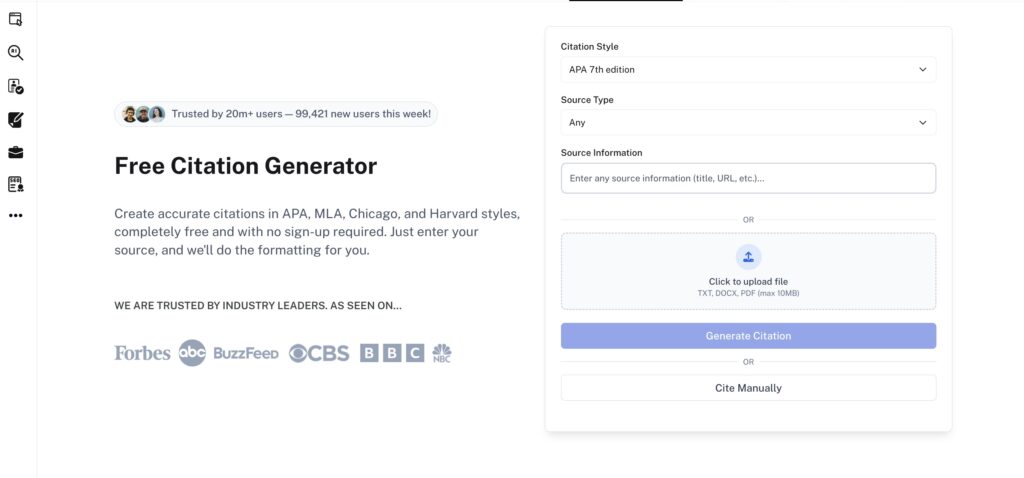
It’s a simple safeguard against accidental plagiarism and a quick boost to your credibility.
- Capitalization Rules for Proper Nouns and Titles
Proper nouns name specific people, places, or things. Common nouns name general categories. Here are the things that get capitalized:
- Specific geographic locations: France, Paris, Mount Everest
- Names with titles: President Biden, Uncle Joe
- Organizations and institutions: Harvard University, Microsoft Corporation, Red Cross
- Named historical periods and events: Middle Ages, Renaissance, World War II
- Major words in titles: Nouns, verbs, adjectives, and adverbs (The Art of Writing Well)
Here are the things that don’t get capitalized:
- General terms: country, city, mountain, university, president
- Titles used descriptively: my uncle Joe, the president
- Generic time references: summer, last war, nineteenth century
- Minor title words (unless at the start/end): the, of, in, on, at, by, for, with
- Sentence case headings: Used in casual emails or informal writing (The art of writing well)
If your writing feels stiff, robotic, or packed with awkward punctuation… you need an AI Humanizer.
When sentences feel clunky or over-edited, it hurts your message.
The AI Humanizer smooths it all out.
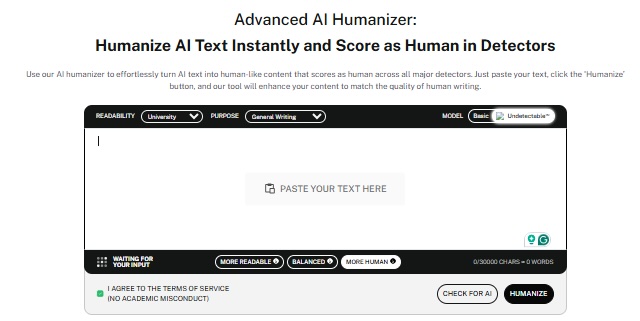
It softens the edges, adds natural flow, and makes everything sound like a real human wrote it (without losing your original meaning).
If you’re pulling definitions, rule examples, or quotes from style guides, make sure you cite them correctly. Our APA Citation Generator builds polished APA references in seconds.
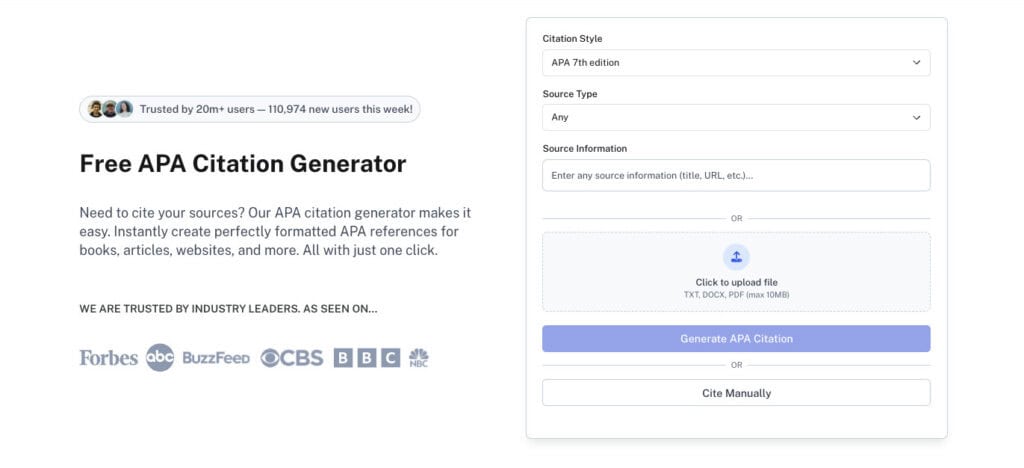
Just add the author, title, date, and URL. It’s a simple way to keep your sources clean and credible while you focus on applying the grammar rules you’ve learned.
Tools to Improve Your Grammar
Here are the best resources to learn english grammar rules:
| Tools To Improve Your Grammar | ||
| Tool | Feature | Description |
| Grammar Checker | Real-time error detection | Identifies grammar, spelling, and punctuation mistakes |
| Style Improvements | Increases clarity | |
| Ask AI for Grammar Help | Instant explanations | Explains grammar rules |
| Custom examples | Generates examples using your specific content | |
| Usage in context | Shows how rules vary between formal and informal settings | |
| Essay Writer & Rewriter | Structure improvement | Organizes thoughts logically and effectively |
| Grammar correction | Fixes errors without changing your voice | |
| Style consistency | Maintains tone and voice throughout the text | |
| AI Humanizer | Natural flow | Rewrites robotic text into conversational, human sounding language. |
| Sentence variety | Mixes up sentence length and structure to improve engagement | |
| Punctuation correction | Reduces unnecessary commas or periods | |
Enhance your content’s authenticity—try the AI Detector and Humanizer now.
Final Thoughts
Grammar is about being clear, confident, and easy to understand.
You won’t remember every rule right away—and that’s okay. You don’t need to stress about small mistakes.
What matters most is using what you’ve learned. You have used the best resources to learn English grammar rules, and now it’s time to apply.
Apply these grammar tips in your daily writing. Send that email without overthinking where the comma goes.
Write that report knowing your sentence makes sense. Share your thoughts without worrying if someone will correct your grammar.
Of course, you’ll still get stuck sometimes. That’s normal.
But don’t let it slow you down. Use resources like Grammar Checker or Ask AI when you’re unsure.
And when you need to make sure your writing sounds natural, polished, and human, use Undetectable AI to refine and humanize your content with ease. Try it now.
Start small. Keep going. And let the right tools support you while you grow.
